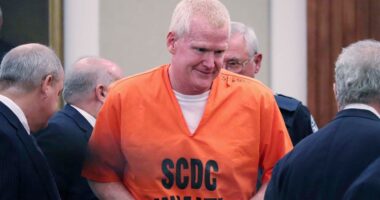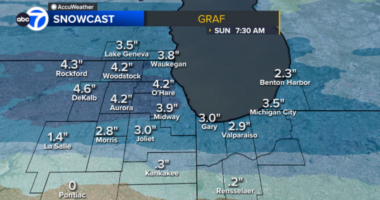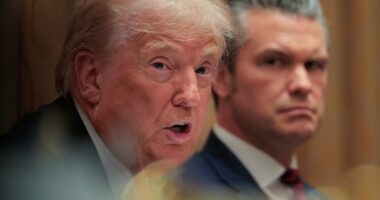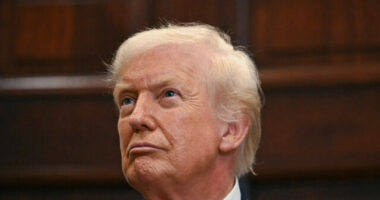Share this @internewscast.com

The Trump administration has allocated an additional $300 million to a critical food aid initiative aiding low-income mothers and young children, temporarily easing fears that it might face financial shortages due to the government shutdown.
This assistance, offered through the Special Supplemental Nutrition Program for Women, Infants, and Children (WIC), enables over 6 million low-income families to purchase essential nutritional items such as fruits, vegetables, low-fat milk, and baby formula. The potential threat of the program’s funding depletion arose as the shutdown began, coinciding with its scheduled annual funding period.
In a strategic move to sustain the program, White House spokeswoman Karoline Leavitt announced via X that the administration had devised a solution utilizing tariff revenues. By Thursday, multiple states, including Alaska and Washington, confirmed receipt of federal WIC funding sufficient to continue operations through at least October’s end. The Inter-Tribal Council of Nevada, which had previously ceased operations due to lack of funds, also received financial assistance allowing its Friday reopening, as reported by radio station KUNR.
The U.S. Department of Agriculture, which oversees WIC, informed congressional staffers it used $300 million from the previous fiscal year’s unused tariff revenue to maintain the program, according to sources aware of the discussion. These sources requested anonymity as they were not authorized to disclose specifics from the briefing.
Tariff revenue supports many USDA programs. The law permits the administration to transfer money allocated for other programs to WIC.
Absent this financial boost, it would fall on state and local governments to cover WIC costs, later seeking reimbursement from federal sources upon funding restoration. However, facing a significant budget deficit, Washington state indicated it could not finance the program from its resources.
Alaska’s WIC had limited federal funding to continue only until Saturday, necessitating state intervention for further support. Thanks to the recent allocation, nearly $900,000 is now available, ensuring the program’s full operation until November 8, revealed Shirley Sakaye, a state health department spokesperson. She noted that approximately half of these funds originated from savings in other programs.
The government has been shut down since Oct. 1, after Republicans and Democrats in Congress failed to pass a bill to continue funding the government. Congressional Democrats want to reverse cuts to Medicaid that were passed earlier this year as part of President Donald Trump’s mega-bill. They also want to extend subsidies that cut the cost of Affordable Care Act insurance plans, which cover more than 24 million Americans.
The White House and Republicans in Congress have hammered Democrats for the shutdown, highlighting the potential damage it could do to WIC.
“The Democrats are so cruel in their continual votes to shut down the government that they forced the WIC program for the most vulnerable women and children to run out this week,” Leavitt posted on X.
But House Republicans and the White House have also sought to cut the program. Trump’s budget proposal and a budget bill passed by House Republicans last month would not have fully funded the program, meaning it would have to turn away eligible applicants.
“Since President Trump is now signaling he cares about the WIC program, he should finally get to the negotiating table to reopen the government,” said Sen. Patty Murray, a Democrat from Washington state. “And he should immediately disavow his budget request to significantly cut benefits for millions of moms and kids — and tell House Republicans to back off their proposed cuts as well.”
____
This story has been corrected to reflect that the Affordable Care Act covers 24 million Americans, not 25 million.
____
The Associated Press’ education coverage receives financial support from multiple private foundations. AP is solely responsible for all content. Find AP’s standards for working with philanthropies, a list of supporters and funded coverage areas at AP.org.
















